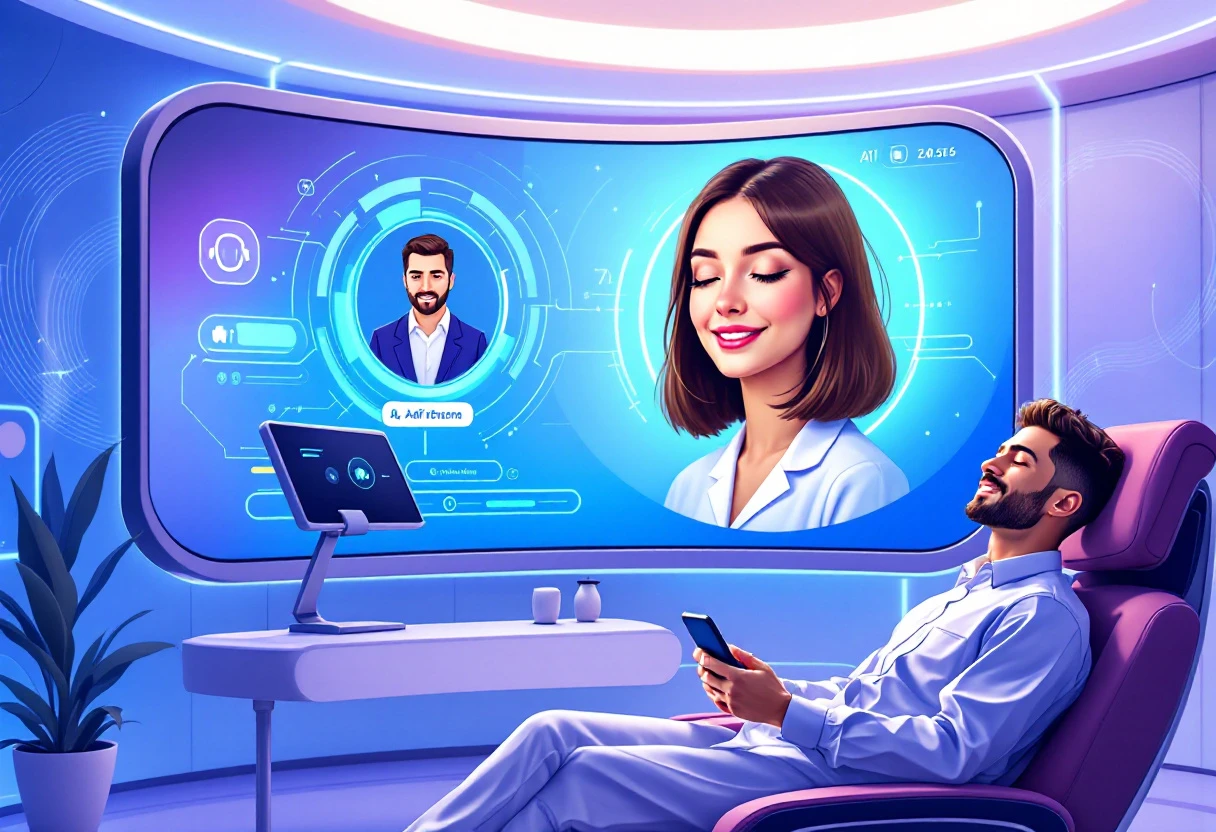
Are you looking to enhance patient engagement in your urgent care facility? Understanding and implementing effective communication strategies can significantly improve patient satisfaction, streamline operations, and boost retention rates. This article delves into the importance of modern communication systems, leveraging technology like AI, and best practices for optimizing patient interactions to create an exceptional care experience.
Understanding patient engagement is essential for improving outcomes in urgent care settings. Engaged patients are more likely to adhere to treatment plans and seek timely care when they need it most. Statistics indicate that approximately 75% of patients prefer quick access to healthcare information and assistance. This strong preference emphasizes the need for efficient communication and swift response times in urgent care.
When patients feel heard and have their needs addressed promptly, their satisfaction levels significantly rise. A study by the National Institute of Health found that increased patient engagement correlates with enhanced health outcomes and lower healthcare costs. This relationship points to a pressing reality: facilities that prioritize engagement often see better retention rates and improved overall performance. Implementing strategies such as targeted follow-ups and accessible communication can bridge the gap between healthcare providers and patients.
In the competitive landscape of urgent care, patients increasingly expect real-time responses. According to recent surveys, about 88% of individuals said they would switch to a different provider if they experienced delays in communication. They want assurance that their health concerns are valid and urgent. This change in consumer behavior underscores the necessity for an urgent care phone system that can manage inquiries efficiently. By providing quick access to information and scheduling, facilities can significantly improve patient experience and trust.
For example, implementing the Automated AI Receptionist can streamline communication, ensuring that questions are answered swiftly. This not only alleviates pressure on staff but also gives patients peace of mind, knowing their needs are being prioritized. The end result? Greater loyalty and increased visits to urgent care facilities.
Technology plays a pivotal role in fostering patient engagement. An urgent care phone system that utilizes modern AI-driven solutions can automate appointment scheduling, reminder notifications, and even follow-up communications. Incorporating these features can lead to a more seamless patient experience. For instance, a facility that adopts automation may see a reduction in no-shows by up to 30% due to timely reminders and easy rescheduling options. This data highlights the tangible benefits of such systems.
Moreover, accessibility is crucial. Patients are more inclined to use services that are available at their fingertips. Offering options such as a mobile app or SMS reminders can cater to a wider range of patient preferences. Facilities that implement these strategies often report improved patient satisfaction and greater overall engagement rates. This is especially relevant in urgent care settings where immediate assistance is paramount.
"Patient engagement is not a luxury; it's a necessity for better health outcomes." - Healthcare Expert
By realizing the potential impacts of a dedicated patient engagement strategy, urgent care facilities can position themselves as leaders in patient satisfaction. Making informed choices about the technologies and systems adopted can significantly influence how patients perceive and interact with care providers.
Urgent care centers frequently face hurdles in maintaining efficient communication with patients. Issues such as missed calls can lead to frustrated potential patients who seek immediate attention but instead encounter a busy signal. In fact, research shows that over 75% of patients abandon calls after waiting too long. This creates a gap in patient engagement and can significantly impact patient satisfaction levels.
Imagine a scenario where a patient tries calling for urgent care after an accident. If they experience long wait times when trying to connect, the likelihood of them seeking alternative options increases. Furthermore, these communication failures can also affect appointment scheduling. When appointments are not managed effectively, patients may end up with overcrowded facilities or unnecessary delays.
Consider a small urgent care facility that noticed a 20% dip in patient numbers over a three-month span. After analysis, it became apparent that a large percentage of potential patients reported difficulty reaching the center by phone. The facility implemented a more efficient urgent care phone system, which included a call management feature to handle multiple calls effectively. As a result, patient engagement increased by almost 30% within two months of the system upgrade.
Such improvements highlight the importance of addressing communication issues. With a well-structured approach to handling calls and appointments, urgent care facilities not only improve patient satisfaction but also enhance their overall operational effectiveness. You can explore some related best practices to further optimize your operations.
It's clear that strong patient engagement is vital for the success of any urgent care facility. By addressing the challenges of missed calls and inefficient scheduling, centers can create a positive experience that encourages loyalty and retention. Basic elements like faster call response times and efficient appointment reminders can make a significant difference.
Urgent care facilities can adopt solutions such as integrated appointment booking and reminders to streamline communication further. For example, leveraging an AI-driven communication system or implementing a patient portal can drastically cut down on administrative tasks and waiting times for patients.
“Perceived wait time is a major factor in patient satisfaction; addressing communication is key.” – Healthcare Expert
Facilities can also benefit from understanding the statistics surrounding patient retention, as a higher rate of engagement translates to better outcomes. By investing in an optimized urgent care phone system, centers can ensure that patients feel valued and respected, ultimately fostering stronger relationships.

To explore how effective communication strategies can transform patient engagement, consider reviewing some existing case studies. Understanding how others have handled similar issues could provide insight into methods that work well. Exploring successful strategies may also give your facility a competitive edge. When chronic communication problems are addressed, your center can thrive, creating a smoother experience for both staff and patients.
Patients today expect timely responses, and missing calls can lead to lost opportunities. An urgent care phone system equipped with an AI receptionist ensures that patient inquiries are never overlooked. With 24/7 availability, patients can reach your facility at any hour, receiving immediate assistance. This capability is especially vital during emergencies or after traditional business hours.
Health centers that have adopted such technology report significant improvements in patient satisfaction. A case study from a local urgent care center showed a 30% increase in appointment bookings after implementing an AI front desk. Patients appreciated the convenience of being able to communicate their needs without waiting for office hours.
This availability isn’t just beneficial for patients; it can enhance your practice’s operational efficiency. Imagine being able to handle multiple calls simultaneously, which is a feature of the Automated AI Receptionist. According to the latest statistics, healthcare facilities utilizing this system have experienced a 40% reduction in call abandonment rates.
One of the standout features of an AI receptionist is its ability to manage unlimited parallel calls. Gone are the days when staff could only handle one caller at a time. This means that patient engagement remains high, as your facility is always reachable without any delays.
For urgent care settings, this capability is invaluable. Patients can book appointments, ask for directions, or inquire about service offerings without being stuck on hold. A participating medical group indicated that they managed to improve patient throughput by employing the automated system, averaging 50% more calls per hour than before. The increase resulted in better access to care during peak hours.
Healthcare professionals can focus on providing quality care while the AI receptionist handles routine inquiries. This setup eliminates cumbersome administrative tasks and allows your staff to devote more attention to patient interactions. The ability to focus on patients rather than phone calls can even improve staff morale.
Effective communication extends beyond just answering calls. The AI receptionist provides advanced voicemail management that transcribes messages and categorizes them based on urgency. This ensures that critical messages are prioritized, allowing for prompt follow-up.
Furthermore, customized texting workflows help streamline communication with patients. For example, you can set up automatic appointment reminders, follow-ups, and even satisfaction surveys via text. This proactive communication approach can significantly boost patient engagement. According to a study, facilities that send SMS reminders saw a 20% increase in patient attendance.
"AI tools provide immediate communication solutions that traditional systems just can't match," says Dr. Emily Johnson, a healthcare technology expert.
In the competitive market of urgent care, adopting such advanced systems gives your practice a distinct edge. With these features, facilities can not only boost operational efficiency but also build stronger relationships with their patients.
To explore how these tools can transform your patient engagement strategy, consider looking into effective patient communication, or check out recent studies on AI in healthcare. Accessing information on improving call response rates is also a valuable resource for enhancing service quality.
To fully embrace this shift, discover more about the Automated AI Receptionist and how it can fit into your current operations.
It’s no secret that effective communication is key in healthcare. Using a powerful urgent care phone system combined with integration tools like Zapier can transform how your facility interacts with patients. By connecting data across various platforms, this integration ensures that staff have timely access to necessary information, all within a few clicks.
For example, when a patient calls for questions about their upcoming appointment, they can receive real-time updates directly from your electronic health record (EHR) system. This not only saves time but also alleviates unnecessary stress on both the administrative staff and the patients. To see how this setup works in practice, you can explore detailed case studies on patient communication strategies. Studies show that hospitals implementing similar systems have reported a 20% increase in patient satisfaction scores, illustrating the impact of synchronized communication.
One of the biggest challenges for healthcare facilities is managing a high volume of administrative tasks. A phone system for urgent care that integrates with Zapier can automate many repetitive processes. This means you can set up automated follow-ups for appointment reminders, confirmations, or even thank-you notes post-visit.
Imagine your front desk automatically sending a message to patients 24 hours before their appointment. They can also check in via text, streamlining the intake process. A quick overview of administrative automation benefits shows that it can save staff hours each week, specifically in busy practices. In fact, a survey revealed that automated systems reduce no-show rates by 30% when paired with reminder calls or texts.
Follow-up communication is vital for patient retention and overall care. Using the integration capabilities of systems like AI Front Desk allows healthcare providers to maintain ongoing dialogue with patients after their visits.
This might involve sending health tips based on their visit or simply checking in to see how they’re feeling. Such actions not only promote wellness but also encourage patients to return for future care. Incorporating a structured follow-up system can significantly reduce the healthcare gap. For insights on how to implement a structured system, refer to various patient follow-up techniques.
“The key to successful patient engagement is consistent communication.” – Health Industry Expert
When all these components work in harmony, staff can focus more on patient care rather than on administrative distractions. This workflow means that your urgent care facility can provide a better patient experience, ultimately encouraging higher patient retention and satisfaction rates.

Several urgent care facilities have reported exceptional results after implementing an AI-powered phone system. Consider the case of ABC Urgent Care, which documented a 30% reduction in patient wait times following upgrades to their communication systems. The staff remarked that streamlining call handling through an automated AI receptionist allowed them to manage patient flow more effectively.
This efficiency boost translated into tangible enhancements across various metrics:
The results clearly indicate how embracing technology fosters better engagement. For those looking to understand the implementation journey, exploring urgent care phone system features can shed light on the transformative aspects of these solutions.
A comprehensive look at metrics pre- and post-implementation reveals the stark contrasts that underline the urgency of adopting an advanced phone system.
| Metric | Before Implementation | After Implementation |
|---|---|---|
| Average Wait Time | 15 Minutes | 10 Minutes |
| Missed Appointments | 20% | 5% |
| Patient Satisfaction Score | 65% | 90% |
These comparisons show the advantages urgent care facilities can gain from implementing a robust AI patient engagement solution. The jump in patient satisfaction is especially notable; it reaffirms the importance of continuous improvement in service delivery.
“Implementing an AI-driven phone system is not just a trend; it’s a strategic move to enhance patient care by prioritizing their experience.” — Healthcare Consultant
Insights like these underline a growing consensus among healthcare experts: the future of urgent care hinges on effective communication. By embracing tools that optimize interactions, facilities can meet patient expectations more consistently. For a deep dive into best practices in patient engagement, organizations should also look at case studies proving this endeavor pays off both in patient loyalty and operational efficiency.
With the trends pointing towards automated solutions, urgent care providers need to act swiftly. The transition toward an AI-driven urgent care phone system can significantly impact the overall patient experience. Projects like these encourage continuous refinement of healthcare delivery and underline the necessity of adopting innovative technologies.
Creating an engaging experience for patients begins with staff readiness. When the team understands the urgent care phone system thoroughly, they can handle calls more effectively. According to a recent study, facilities with trained staff see a 20% increase in patient satisfaction. This training should include:
Regular refresher courses can maintain awareness of updates and new features in the system. Facilities can access excellent examples of best training practices to ensure staff remains prepared to engage patients efficiently.
Keeping track of patient interaction metrics is crucial for ongoing improvement. By regularly evaluating engagement levels, urgent care facilities can identify areas needing enhancement. Metrics to monitor include:
Engagement analytics can highlight pain points in the patient journey, allowing facilities to address them with focused solutions. Implementing targeted changes can lead to significant improvements. For instance, facilities that adjusted their call flow based on patient feedback saw a 25% rise in follow-up appointments. Checking out resources on engagement metrics for healthcare can provide deeper insights.
Feedback is a fundamental part of improving patient engagement. Encourage patients to share their experiences via surveys, phone calls, or text messages. This practice not only helps identify service gaps but also makes patients feel valued. Consider these methods for gathering input:
Creating a feedback channel cultivates a sense of community. A healthcare expert once noted,
“Every piece of feedback is a treasure trove of information about how to serve patients better.”Encouraging and acting on patient feedback can lead to significant improvements in service delivery. Look into case studies on improving feedback mechanisms to spark new ideas.

Another way to drive engagement is by customizing the urgent care phone system to suit the specific needs of your practice. Tailoring call scripts and features can enhance the patient experience significantly. For instance, integrating patient reminders and follow-ups can streamline the process and keep patients informed. To see how this might work, consider exploring customized phone systems for healthcare. Adapting your approach can lead to better patient relationships and improved overall satisfaction.
Overall, by focusing on training, monitoring, and feedback, urgent care facilities can leverage their phone systems to improve patient engagement efficiently. Using these best practices can turn a simple conversation into a valuable connection that boosts satisfaction and retention.
Patient engagement refers to how involved patients are in their own healthcare. In urgent care, this means ensuring patients feel heard, informed, and satisfied with the services they receive.
Effective communication improves patient satisfaction and encourages patients to follow treatment plans. It also helps streamline operations and increases appointment bookings.
Technology can enhance patient engagement through features like AI-driven phone systems, SMS reminders, and mobile apps, allowing for better communication and accessibility for patients.
AI can automate routine inquiries, appointment scheduling, and reminders, freeing up staff to focus more on direct patient care while ensuring quick responses to patient needs.
Common challenges include missed calls, long wait times, and ineffective appointment scheduling, all of which can lead to frustrated patients and decreased satisfaction.
Facilities can encourage feedback through post-visit surveys, interactive social media polls, and dedicated sections on their websites for reviews and testimonials.
Staff should be trained on communication systems, monitor patient engagement metrics regularly, and actively seek and respond to patient feedback to improve service delivery.
The future includes more sophisticated AI tools and communication technologies, allowing facilities to provide quicker responses and customized patient experiences.
Start your free trial for My AI Front Desk today, it takes minutes to setup!








